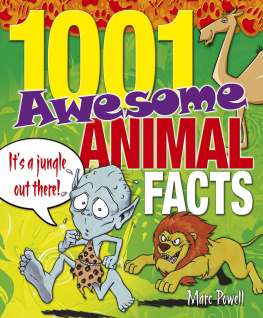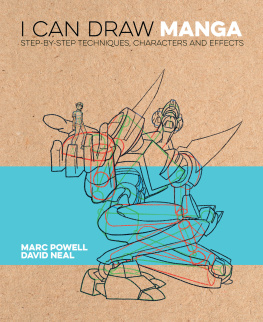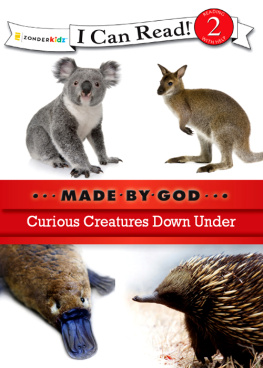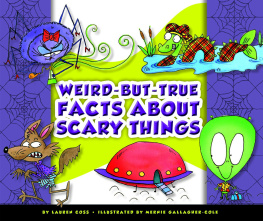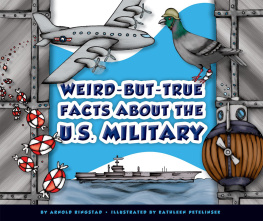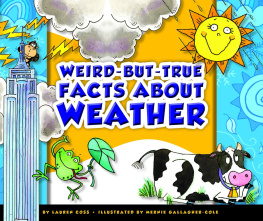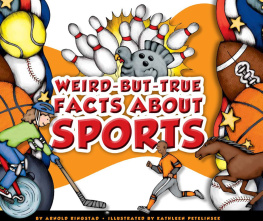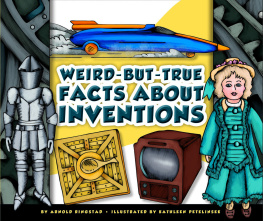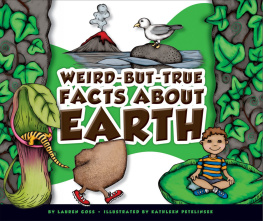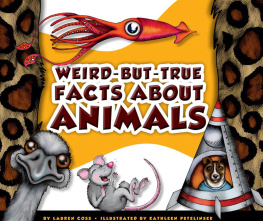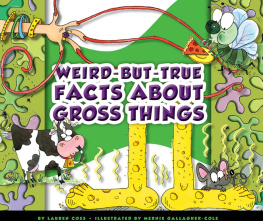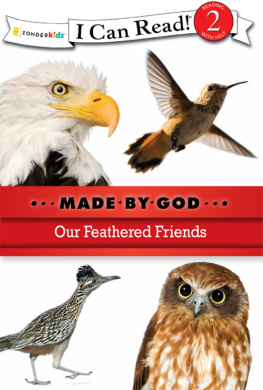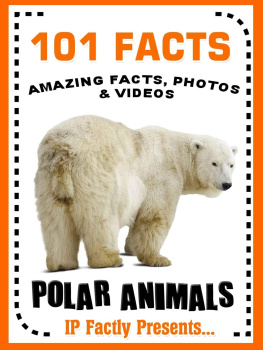
The world is a wonderful place filled with all manner of amazing creatures. Everything that crawls, flies, slithers, swings or swims has its own story to tell.
From the dawn of the dinosaurs right up to the present day, creatures all around the world have been doing amazing things that are just normal to them. For example, did you know that the grebe bird eats feathers and feeds them to their young even though they cant digest them? Or that beavers are sometimes parachuted into remote river areas to build dams and prevent flooding? Dont think you have to travel the world, or even through time, to be impressed even your supposedly everyday pets will become loads more interesting after youve read about their weird and wacky habits.
It may get a bit gross in places. In fact, its definitely going to get a little bit icky and may put you off your dinner. Youll discover the disgusting habits of the animals that you thought were oh-so cute and the incredible ways of those that you may have thought were a bit boring.
Awesome Ape and Monkey Facts
(Free extras, not part of your 1001 facts!)
Most animals try to blend in with their surroundings but the mandrill has decided its better to look good than to be able to hide easily. With its red nose, blue cheeks and orange beard its not easy to miss. Add to that a big blue behind and you have one truly multicoloured monkey.
The pygmy marmoset is the worlds smallest primate its the size of a hamster!
They say a chimpanzee can learn to recognize itself in a mirror but no other monkey or ape can. (Maybe theyre just not as vain as chimpanzees.)
Proboscis monkeys have huge, funny noses. They are so big that they can measure a quarter of their total body length. Thats like you having a nose as long as your arm!
Finally, a quick tip for you: next time you see a gorilla with the sniffles, its probably not a good idea to offer him a tissue, as gorillas can catch colds and many other illnesses through contact with humans. In fact, going anywhere near a gorilla is probably not a good idea at the best of times
Look but dont touch!
Watch your pets with an observant eye, get out your magnifying glass in the garden, even try hypnotizing a chicken if you know a friendly one nearby. But please, please be kind to animals. Remember, they are living things and will defend themselves and their environments if they feel threatened, which could lead to some nasty injuries. Pay closer attention to nature but make sure all you do is observe. A bit like teachers and parents, no matter how gross, stinky or nasty they seem, they have feelings too

Prehistoric Predator
Facts

The word dinosaur means terrible lizard.
In 1676, a huge femur (thigh bone) was found in England by Reverend Robert Plot. It was thought at the time that the bone belonged to a giant!
Spinosaurus was the largest meat-eating dinosaur. Even though it looked big and scary, its favourite food was fish!
In 1780, the remains of Mosasaurus were seized by the French army and were taken from the Netherlands all the way to Paris!

Cells discovered in a T. rex bone have DNA that so closely resembles that of a bird, that some scientists believe T. rex would have tasted like chicken!
Around 50,000 years ago, ancient Australia was home to Procoptodon, the worlds largest kangaroo. It was twice the size of todays kangaroos.
Some dinosaurs, such as Parasaurolophus, used their large noses to control their body temperature by adjusting the amount of air they breathed in.
Four in every five dinosaur discoveries are made by amateurs rather than by scientists.
It was possible to tell the age of a Mastodon (ancient relative of modern elephants) by cutting into the fat around its tusks. The rings in the fat could be counted to determine its age, just like a tree!
Approximately 440 different kinds of dinosaurs are currently known to have existed.
Unlike in the movies, Velociraptor did not kill its prey with its razor-sharp claw. It used its claws to hang on to its prey while attacking it with its teeth, a bit like lions do today.

Some Pteranodons (flying reptiles, like dinosaurs) used their pointy heads as an air-brake for landing they would turn sideways to catch the wind and slow themselves down.
Horses evolved around 50 million years ago, soon after dinosaurs became extinct.
When dinosaurs first appeared during the Triassic period, (248206 million years ago) the earth had just one huge continent called Pangea.
Over 100 million years ago, crocodiles were twice the size they are now.

The gigantic dinosaur Sauroposeidon could stretch its neck out 17 metres/55 feet. Thats the same height as four double-decker buses stacked on top of each other!
Over 390 million years ago, prehistoric swamps were home to sea scorpions larger than humans. Discovered in Germany, one fossilized beast was a whopping 2.5 metres/8 feet long!
Scientists use dentists drills to clean dinosaur bones.
Quetzalcoatlus was the biggest flying creature ever. It had enormous wings and was the size of a modern two-seater aeroplane!

Fossilized cockroaches have been found to be 300 million years old. This means they existed 100 million years before the dinosaurs!
On the tiny Arctic island of Spitsbergen, just off the coast of Norway, researchers discovered a fossil graveyard holding a total of 28 plesiosaurs and ichthyosaurs. Why they all died in that particular area is a mystery.
Because the pigment (colour) is not preserved in fossils, nobody knows what colour the dinosaurs were. Many palaeontologists think they were earthy colours like grey, green or brown.
T. rex ate the equivalent in meat of 290 adult humans every year.
The first dinosaur, Eoraptor, appeared around 225 or 230 million years ago and was about the size of a dog.
T. rex could run no faster than 32 kilometres/20 miles per hour. If it fell over while running, it probably would have died as its arms were too short to break its fall.
Scientists believe that dinosaurs talked to each other. From examining their head shapes, its thought that T. rex probably had a deep raspy call, a Hadrosaur sounded like a honking goose and Apatosaurus sounded like a herd of snorting horses!

A massive sloth called Megatherium roamed the earth as recently as 8,000 years ago. If the huge elephant-sized beast hadnt been wiped out by human hunting theyd still be alive today!
Next page
